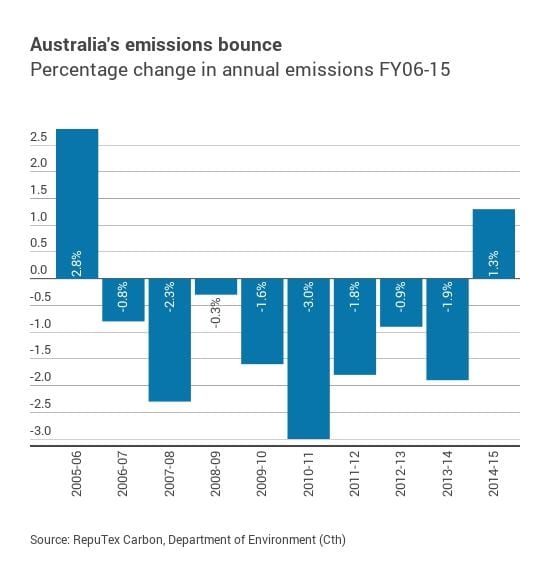3 February 2016, Renew Economy, Senate to inquire into carbon risk, despite Coalition objection. The Australian Senate is to begin an inquiry into carbon risk disclosure in Australia, following a proposal by the Greens after the ground-breaking Paris climate agreement reached late last year. The inquiry is due to report in June and will study carbon risk disclosure practices among Australian companies, regulatory oversight, international practice, and Australia’s involvement in the G20 Financial Stability Board discussions on carbon risk impacts. “The Paris Agreement finalised in December 2015 has fundamentally changed the investment landscape,” said Emma Herd, the head of The Investor Group on Climate Change (IGCC), which represents most major investment houses and superannuation funds. “When 195 nations agreed to a goal of limiting global warming to 2°C moving towards 1.5°C, it immediately became clear that all companies will need to stress test their commercial strategy for a two degree scenario and disclose to the market the risks and opportunities for their business.” The inquiry will focus on corporate disclosure, although given the decisions at state and federal level in recent weeks, it might also want to focus on the carbon risk for the Australian economy as a whole. New data this week revealed that Australia was increasing its emissions at a faster rate than any other developed economy, and was not likely to peak its emissions before 2030. The lack of new funding for Direct Action means that there is now no policy in place to reduce emissions. Investment in renewables remains at a standstill. Read More here
2 February 2016, The Guardian, Queensland gives Adani environmental permit for Carmichael coalmine. Huge project clears one more hurdle, but financial uncertainty still hovers over the mine and related rail and port construction at Abbot Point. Adani has secured an environmental permit from the Queensland government to build Australia’s largest coal mine. The Indian conglomerate was issued an environmental authority for its Carmichael mine, west of Bowen in north Queensland, by the department of environment and heritage on Tuesday. It is one less hurdle for Adani’s highly contested plans, after its Australian chief complained last week that delays in government approvals were “incentivising” green activists to plot further legal challenges to stymie the company’s progress. Adani still needs to obtain significant bank funding to realise its $16.5bn mine, rail and port project. It must convince the Queensland government it has obtained “financial closure” before it will be allowed to begin dredging near Great Barrier Reef waters to expand the Abbot Point export facility. A lull in world coal demand and moves in India to rely less on imported thermal coal have cast doubt on the future of the mine. Adani still has to obtain a mining lease from the Queensland government. The state land court last year recommended resources minister Anthony Lynham approve the lease after a legal challenge by conservation group Coast and Country failed to persuade the judge that the mine would have any impact on Asian coal consumption. Read more here

